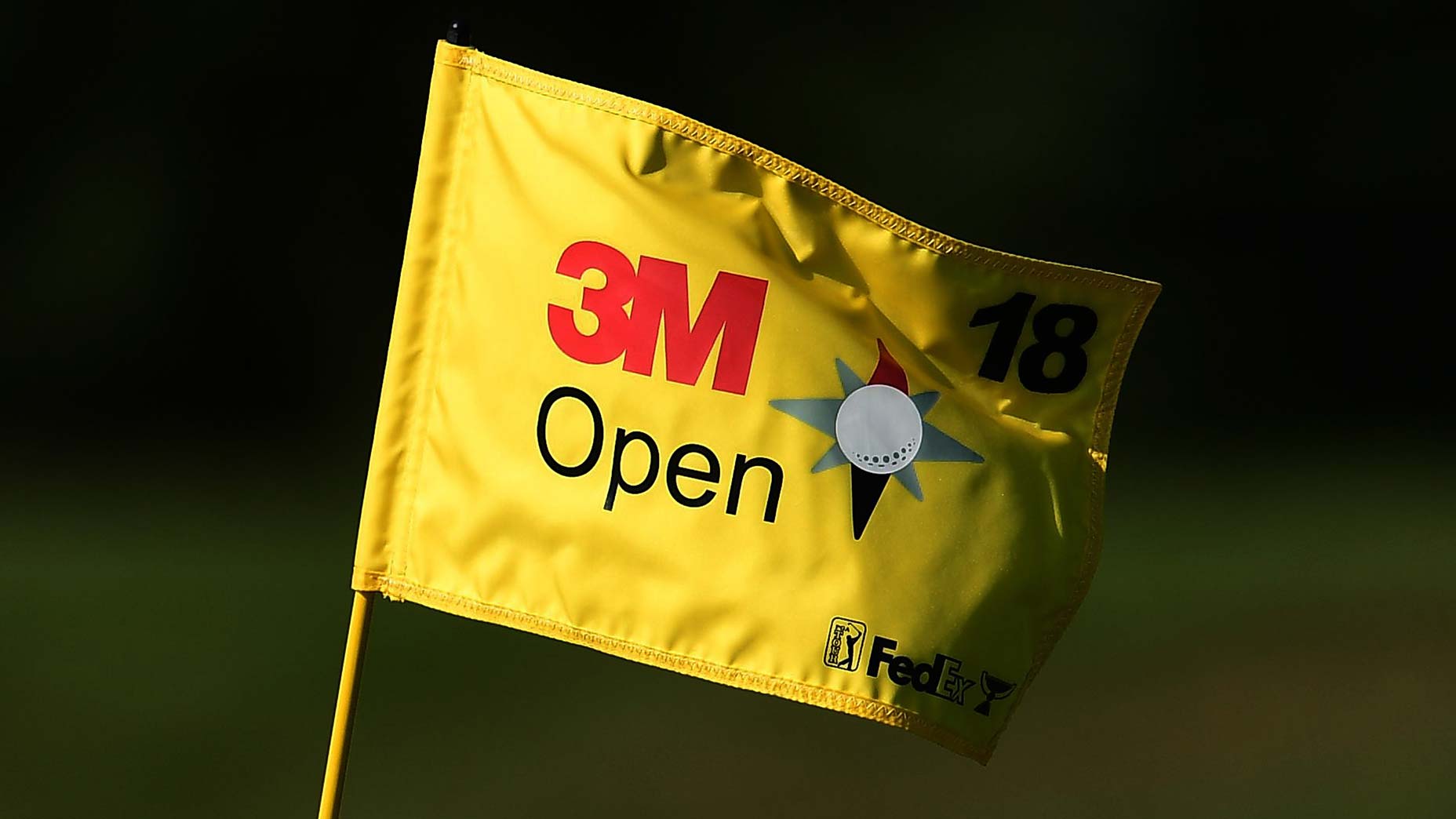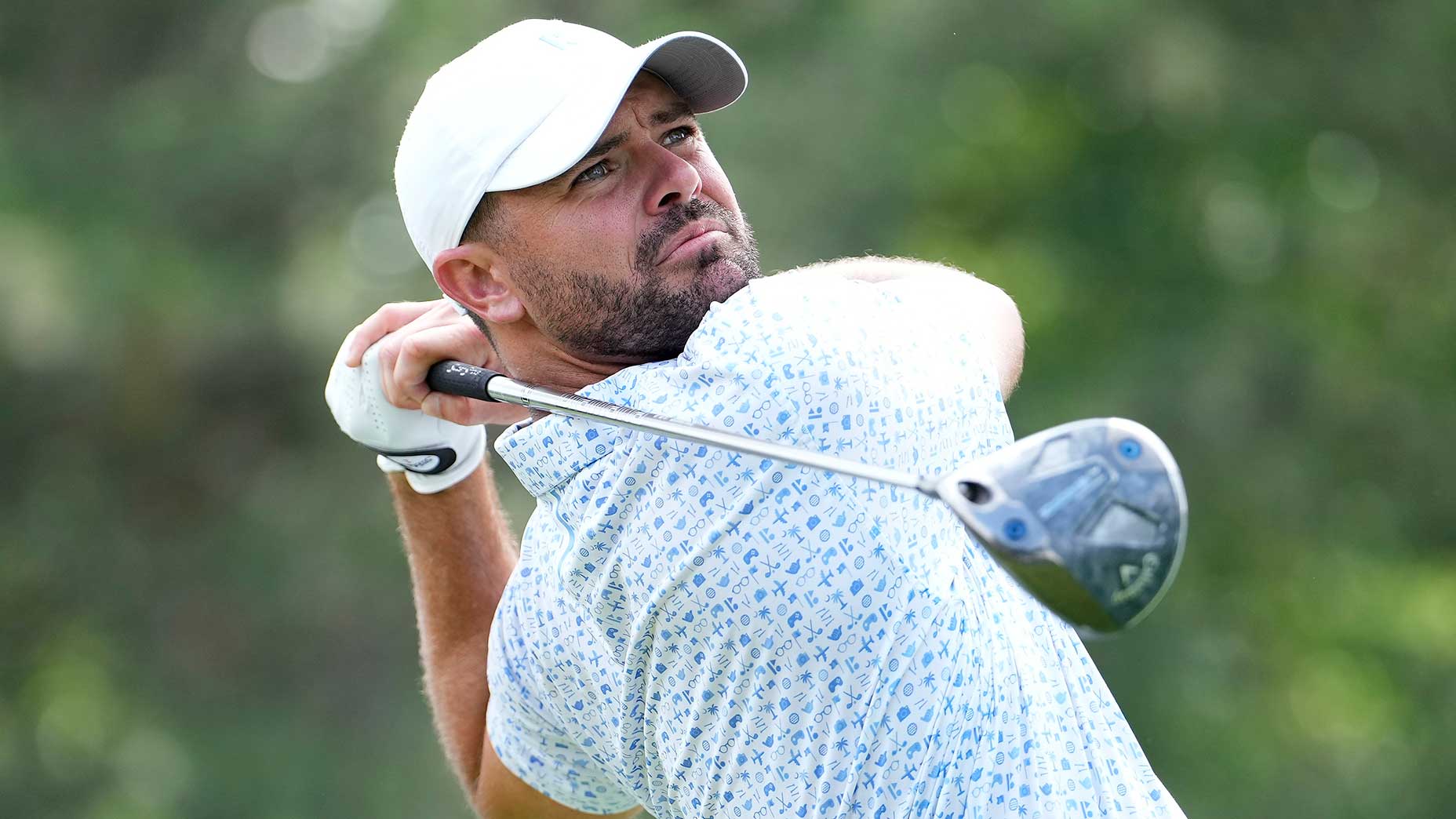PGA Tour, Saudi PIF provide negotiation update at deadline

PIF chief Yasir Al-Rumayyan (left) and PGA Tour commissioner Jay Monahan (right) are working to extend the "framework agreement" deadline into 2024.
Getty Images
Golf’s biggest story will run at least a few weeks longer.
The PGA Tour and Saudi Public Investment Fund failed to reach a “definitive agreement” on a potential merger by Sunday’s deadline, the two parties announced Sunday evening, electing to push back the target deadline to a later date that still has not been determined.
“While we had initially set a deadline of December 31, 2023, to reach an agreement, we are working to extend our negotiations into next year based on the progress we have made to date,” Monahan wrote in a letter to PGA Tour membership late Sunday evening. “Our goal for 2024 is to reach agreements with SSG, PIF and the DP World Tour, bringing them on board as minority co-investors.”
Negotiations between the Tour and PIF have centered around the shape of a new, for-profit entity named PGA Tour Enterprises. It is expected that the Tour will pool its moneymaking ventures within the new entity, allowing investors (and some players) to take equity in pro golf’s high-ticket businesses in exchange for significant cash investments. That company, an offshoot of the Tour’s existing business model, could allow the Tour to operate similarly to many professional sports “franchises” today, in which owners “buy into” a league in exchange for an annual cut of revenues from TV agreements and sponsorships.
The news arrives after days of speculation around negotiations between the Tour and the PIF, which were supposed to be finalized by the start of the new year. Tour representatives have repeatedly said that talks were “progressing” in recent weeks, but the two sides’ inability to reach an agreement by the proposed deadline creates skepticism on the state of affairs. While the new deadline portends that the two sides still wish to reach an agreement, the complex nature of the negotiations and a recent spate of leverage plays leaves open the concerning possibility that the two sides could still choose to walk away.
The conversations between the two sides have grown increasingly complex in recent weeks. On one side, the PGA Tour agreed to “advance” equity talks with a consortium of wealthy investors named the “Strategic Sports Group,” or SSG, which includes the current and former owners of at least a dozen professional sports franchises. Part of Monahan’s letter to Tour membership on Sunday evening centered around the SSG investment, which the commissioner said had been undergone “meaningful progress” in recent days and was headed toward “finalization.” The SSG investment could infuse billions into the Tour, but the unusual nature of the negotiations risked running afoul of the Saudis, who could see the SSG investment as a Tour effort at creating leverage against them. Leverage, of course, was the primary motivation for LIV’s poaching of reigning Masters champion and current World No. 3 Jon Rahm from the PGA Tour in a deal reportedly worth several hundred million dollars. In addition to robbing the Tour of one of its most important players, the Rahm move had the effect of publicly reaffirming Saudi commitment to LIV and pro golf writ large. The move was a coup for LIV, yes, but it was also a thinly veiled threat to a Tour establishment that has openly admitted it cannot financially compete with the Saudis.
Team golf is believed to be one of the significant sticking points of the current negotiations — namely, the shape of LIV’s team concept in a world where the PGA Tour and LIV are operated under the same umbrella. At present, it would seem incompatible for an eight-tournament “Signature Event” season on the PGA Tour and a 14-event LIV season to exist on the same golf schedule (especially when accounting for the four majors and the Ryder Cup). But LIV’s business model is predicated around the success and eventual value of team golf, where franchise valuations and equity stakes are viewed as critical.
In theory, a “merger” with the PIF would allow the PGA Tour to control LIV Golf while welcoming a multi-billion-dollar investment from the Saudi backers. But any agreement would require sign-off from both sides, and that remains an unknown. For one thing, the motives of LIV’s Saudi investors remain a mystery, as does their flexibility to surrender control. For another, the six player directors on the Tour’s all-important policy board — Tiger Woods, Patrick Cantlay, Jordan Spieth, Charley Hoffman, Webb Simpson, and Peter Malnati — would need to approve any deal before it is formally agreed upon.
At the center of the negotiations are two of the most influential men in professional golf: PIF (and LIV Golf) chairman Yasir-Al Rumayyan and PGA Tour commissioner Jay Monahan. A close confidante of Saudi Crown Prince Mohammed bin Salman, Al-Rumayyan oversees the PIF, a $700 billion sovereign wealth fund with financial entanglements all over the global economy. In recent years, Al-Rumayyan has managed the PIF’s strategic shift into the sports world as part of an effort to cleanse the Kingdom’s public image, with LIV taking center stage in that mission. Monahan, on the other hand, has stewarded a radical transformation of the PGA Tour in his seven years at the helm. In 2020, he signed a flurry of TV rights deals worth close to $10 billion, an extraordinary accomplishment even in a booming sports TV rights market, considering the agreement factored in the expected end of Tiger Woods’ playing career. More recently, Monahan has come under scrutiny for his handling of the Saudi intrusion into pro golf, in particular for the backroom dealings with Al-Rumayyan that resulted in the surprise merger agreement on June 6.
Now, the merger appears closer than ever to reality — a decision that could bring untold billions into the PGA Tour and reunify the pro game, ending a war that has deeply damaged the Tour’s reputation and upended its business. Such a decision might not rest well with much of the golf fanbase, given the hornet’s nest of human rights issues tied to Saudi money and the polarizing nature of the rival tour.
At the New York Times’ Dealbook Summit last month, Monahan appeared agitated by the criticism lobbed at the framework agreement. The scariest outcome for pro golf, he said, wasn’t what would happen if the merger went through. It’s what would happen if it didn’t.
“You’re looking at a fundamental change in our industry,” he said. “The PGA Tour was facing an existential threat from a $700 billion sovereign wealth fund, and that sovereign wealth fund was determined to control the future of our sport.”













